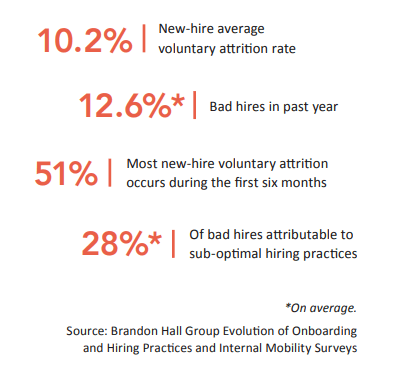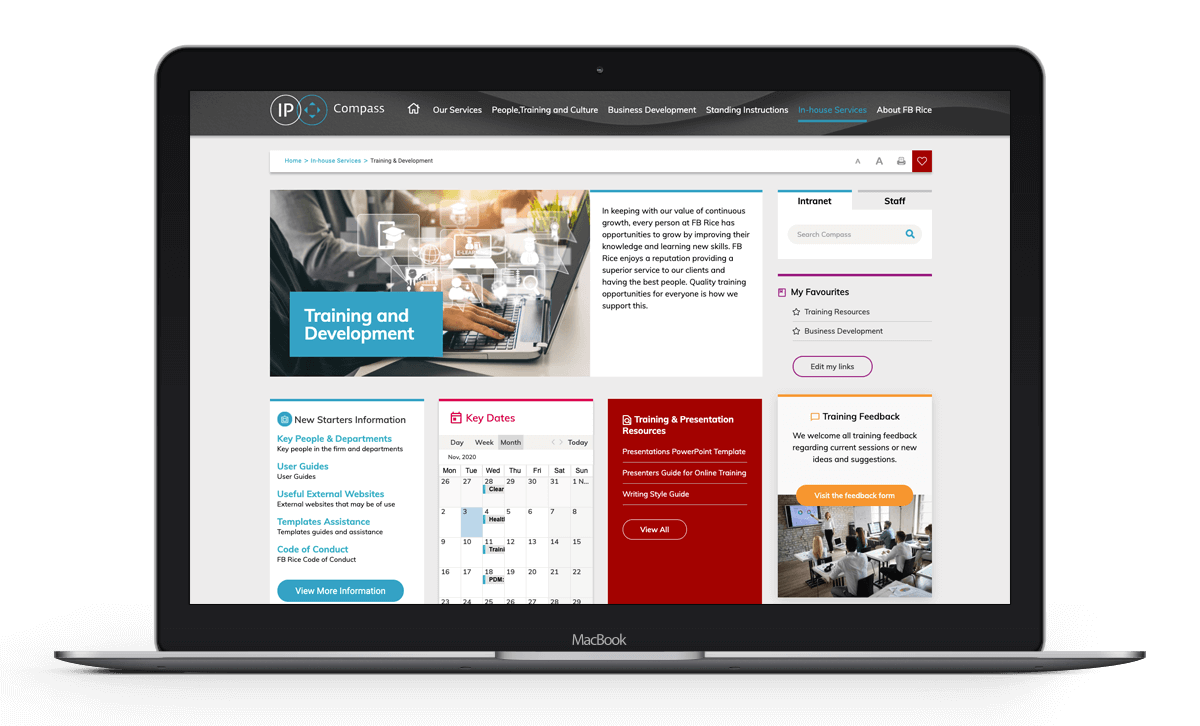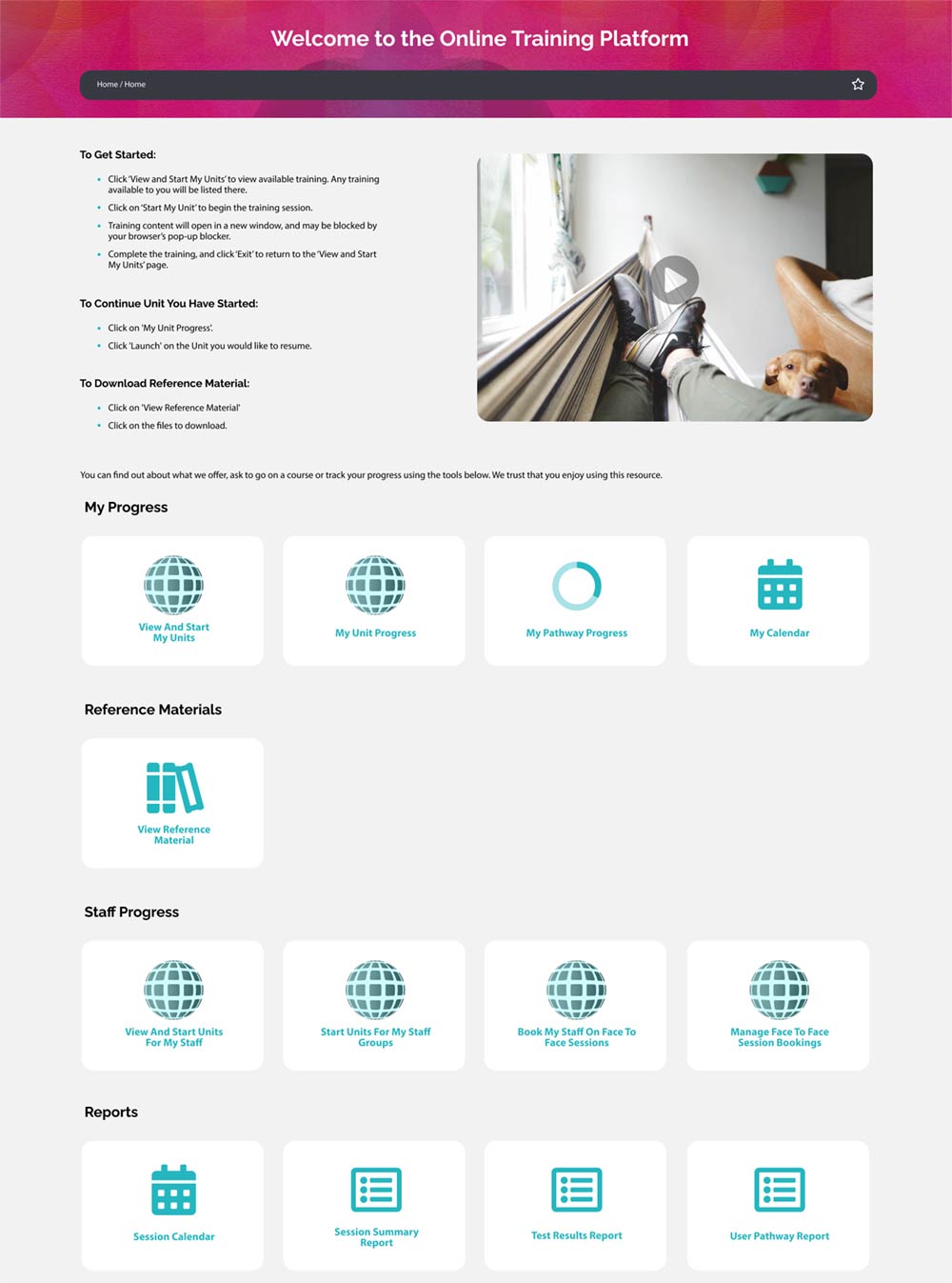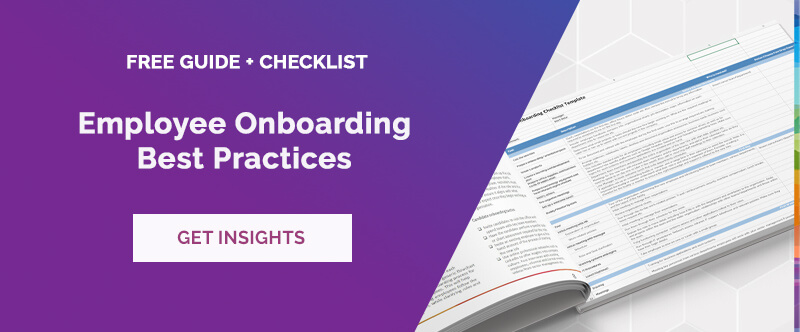With the evolving nature of work environments and the increasing need for streamlined processes, the role of an intranet in enhancing the employee onboarding process is more crucial than ever.
A study by Glassdoor found that organisations with a strong onboarding process improve new hire retention by 82% and productivity by over 70%. This statistic alone underscores the significant impact that a well-structured onboarding program can have on an organisation.
At Elcom, we understand that the first experiences of a new employee can set the tone for their journey within your organisation. Therefore, building an onboarding hub on your intranet not only simplifies the process but also ensures a consistent and engaging experience for every new hire.
By leveraging the power of an intranet, you can create a seamless workflow for employee onboarding, which not only saves time and resources but also fosters a sense of belonging and understanding from day one.
In this blog post, we'll delve further into what an employee onboarding workflow intranet solution entails.
The Importance of Onboarding to New Hire Experience
The journey of an employee begins with their onboarding experience. This initial phase is critical in shaping their perception and future engagement.
A report by Brandon Hall Group highlights that a great employee experience, starting with onboarding, can increase employee retention by 51%. This statistic illustrates the direct correlation between a positive onboarding experience and long-term employee satisfaction and retention.
However, employees often encounter barriers to good onboarding including:
- Lack of clear communication
- Inadequate support systems
- Not understanding company culture and expectations
- Not receiving adequate feedback
Conversely, Brandon Hall Group found that failure to handle onboarding correctly can have a drastic effect on attrition including a massive 51% new-hire voluntary attrition during the first six months.

Source: Brandon Hall Group
It is clear that delivering a great employee experience is imperative for encouraging employees to stay within a role.
Benefits of Optimising Employee Onboarding with an Intranet
The integration of an intranet into the employee onboarding process offers several benefits that can transform how new hires are integrated into your organisation.
By leveraging the capabilities of an intranet, companies can not only streamline their onboarding processes but also enhance the overall experience for new employees.
Let's explore the key benefits of employee onboarding workflow intranet solutions.
Centralised Information for New Hires
- Single Source of Truth: A central repository for all onboarding materials means that new hires have a go-to place for all their needs.
- Ease of Access: Important documents, policies, and procedures are easily accessible, reducing the feeling of being overwhelmed with information.
Streamlined Communication
- Consistent Messaging: Consistent messaging guarantees that all new hires receive uniform information, maintaining consistency in the employee onboarding process.
- Real-Time Updates: Any changes or updates in policies or procedures are immediately communicated, keeping everyone on the same page.
Self-Paced Learning and Training
- Flexibility: New hires can engage with training materials at their own pace, accommodating different learning styles and speeds.
- Trackable Progress: Employers can track the progress of each individual, ensuring that they are keeping up with their training schedules.
Peer Engagement and Mentoring Opportunities
- Social Integration: Integration of social tools such as Microsoft Teams or Yammer facilitates connections with peers and mentors, fostering a sense of belonging and community.
- Mentorship Programs: Easy setup and participation in mentorship programs through the intranet provides valuable guidance for new hires.
Feedback from New Hires and Other Employees
- Continuous Improvement: Regular feedback mechanisms allow for ongoing improvements in the onboarding process.
- Employee Voice: New hires can easily provide their insights and suggestions, making them feel valued and heard.
Less Paper, Email Clutter
- Eco-Friendly: Automating business processes reduces the need for paper-based materials, contributing to environmental sustainability.
- Organised Communication: Centralising communications on the intranet minimises email overload and provides an easy way for new hires to reference existing content and communications at a later date.
Convenient Onboarding
- Accessibility: New hires can access the intranet from anywhere, making it convenient for remote or flexible work arrangements.
- User-Friendly: Intuitive design and navigation of the intranet make the onboarding process more engaging and less daunting.
Scales to Business Growth
- Adaptable Framework: As your business grows, the intranet can easily be scaled to accommodate more users and updated content e.g. via unlimited user licensing.
- Future-Proofing: An intranet is a long-term solution that evolves with your company, supporting continuous improvement in your onboarding strategies.
Tips for Optimising Onboarding with an Intranet
Mastering the onboarding process using an intranet can significantly enhance the new hire experience.
An intranet, especially one equipped with a Learning Management System (LMS), can transform how new employees are introduced and integrated into your organisation. Here are some practical tips focusing on the features and functionality of an intranet to optimise your onboarding process.
Create a Centralised Onboarding Hub
This should include:
- A Central Repository: Develop a dedicated space on your intranet for all onboarding-related resources. This hub should be the first point of contact for new hires, providing them with all the necessary information, from company policies and team introductions to internal branding templates, as well as relevant forms and workflows to trigger a series of follow up tasks and/or automate approvals.
- Easy Navigation: Ensure that the onboarding hub is user-friendly with intuitive navigation. Clear labels and a well-organised structure will help new hires find information quickly and efficiently.
- Regular Updates: Keep the content fresh and relevant. Regular updates means that the information reflects the current state of the organisation and its policies.

Source: FB Rice Intranet
How to implement an onboarding hub:
- Define the Scope: Identify all the elements you want to include in your onboarding hub. This could range from welcome messages, organisational charts, policy documents, to training schedules.
- Design the Layout: Work with your IT team or intranet provider to design a layout that is intuitive and user-friendly. Consider a dashboard-style layout with clear sections for different types of content.
- Populate Content: Start populating the hub with essential content. Ensure that the information is up-to-date and relevant. Include multimedia elements like welcome videos from the CEO or virtual tours of the office.
- Integrate with Other Systems: If possible, integrate the hub with HR systems for automated updates of employee details, or with project management tools for easy transition to work assignments.
- Test and Launch: Before going live, test the hub with a small group of users for feedback and make necessary adjustments. Once refined, launch it to the wider business.
- Maintain and Update: Assign a team or individual to regularly update the hub and maintain its relevance.
Leverage Interactivity to Enhance Engagement
Implementing interactive features to enhance engagement can include:
- Forums and Discussion Boards: Set up forums or discussion boards where new hires can ask questions and share insights. This can be a platform for both learning and building connections.
- Interactive Learning Tools: Incorporate interactive tools such as virtual reality (VR) experiences for office tours, or augmented reality (AR) for product demonstrations, if applicable.
- Gamification Elements: Introduce gamification by awarding points or badges for completing training modules or participating in discussions. This can be tracked and displayed on the intranet.
- Real-Time Collaboration Projects: Encourage new hires to participate in real-time collaborative projects or challenges that require them to use the intranet tools actively.
- Regular Quizzes and Polls: Implement regular quizzes or polls related to onboarding content to keep new hires engaged and test their knowledge.
Use Personalised Onboarding Checklists
Implementing personalised onboarding checklists include:
- Identifying Key Milestones: Determine the essential stages and tasks that a new hire should complete during their onboarding. This could include HR documentation, IT setup, initial meetings, and training sessions.
- Customising According to Role: Tailor the checklist to suit different roles within the organisation. For instance, a salesperson might need specific product training, while a developer might require codebase access and setup.
- Integrating with the Intranet: Use the intranet to host these checklists. Ensure they are interactive, allowing new hires to tick off completed tasks and see their progress.
- Automating Notifications: Set up automated reminders for upcoming tasks or deadlines. This helps keep new hires on track and managers informed of their progress.
- Reviewing and Updating Regularly: Continuously refine the checklist based on feedback and changes in the onboarding process.
Establish Clear Communication Channels
Setting up effective channels includes:
- Dedicated Onboarding Communication Space: Create a specific area on the intranet for onboarding communication. This could include forums, chat rooms, or announcement boards specifically for new hires.
- Regular Updates and Announcements: Use this space to post regular updates, share news, and make announcements relevant to new hires.
- Mentorship and Support Systems: Facilitate connections between new hires and their mentors or buddies through the intranet. Encourage regular check-ins and discussions within this space.
- Feedback Loops: Establish channels where new hires can ask questions or provide feedback about the onboarding process.
- Integration with Other Communication Tools: If your organisation uses other communication tools like email or messaging apps, ensure these are integrated or linked with the intranet for a seamless experience.
Provide Online Training Courses
This should include:
- Leveraging an LMS: Utilise a LMS (aka a Learning Management System) to create and deliver comprehensive online training courses. These can range from general company orientation to role-specific training.
- Interactive Content: Incorporate various multimedia elements like videos, quizzes, and interactive modules to make the learning experience more engaging.
- Tracking Progress: Use the LMS to track the progress of each new hire. This feature allows managers to monitor completion rates and understand how well new employees are grasping the information.

Example LMS
Developing and Implementing Training Courses:
- Assess Training Needs: Identify the training needs of different roles and departments within your organisation. This will help in creating targeted content that is relevant and beneficial.
- Create Engaging Content: Use an LMS to develop engaging training modules. Incorporate various formats like text, video, and interactive quizzes. Ensure the content is broken down into manageable sections.
- Set Learning Paths: Create structured learning paths for different roles. For instance, a new marketing hire might have a different learning path compared to someone in finance.
- Monitor and Support: Utilise the LMS’s tracking and reporting features to monitor progress and identify areas where new hires might need additional support.
- Gather Feedback: After completing the training, gather feedback to understand the effectiveness of the courses and areas for improvement.
Collect Feedback for Continuous Improvement
Implementing effective feedback mechanisms include:
- Surveys and Questionnaires: Regularly distribute surveys or questionnaires through the intranet to gather feedback from new hires about their onboarding experience.
- Feedback Forms: Create easy-to-use feedback forms on the intranet where new hires can quickly share their thoughts and suggestions.
- Focus Groups: Periodically organise virtual focus groups with recent hires to discuss their onboarding experience and gather qualitative feedback.
- Data Analysis: Use the intranet’s analytics tools to analyse feedback data and identify trends or areas for improvement.
- Iterative Process: Implement changes based on the feedback and continuously refine the onboarding process. Share these improvements with the team to demonstrate the value of their input.
Conclusion
The role of an intranet in optimising the employee onboarding workflow is clear. It's a powerful tool that not only streamlines the process but significantly enhances the new hire experience.
By addressing common pitfalls and implementing practical strategies to improve employee onboarding with an intranet, your organisation can ensure that new employees are engaged, informed, and ready to contribute from day one.
A successful onboarding process is the first step in building a long-lasting and productive relationship with your employees. With the right approach and tools, you can transform this critical phase into a seamless and enjoyable journey for every new member of your team.
For more information on employee onboarding best practices including insights on planning, set up and measuring success, check out the free Employee Onboarding Best Practices Guide and Checklist.
